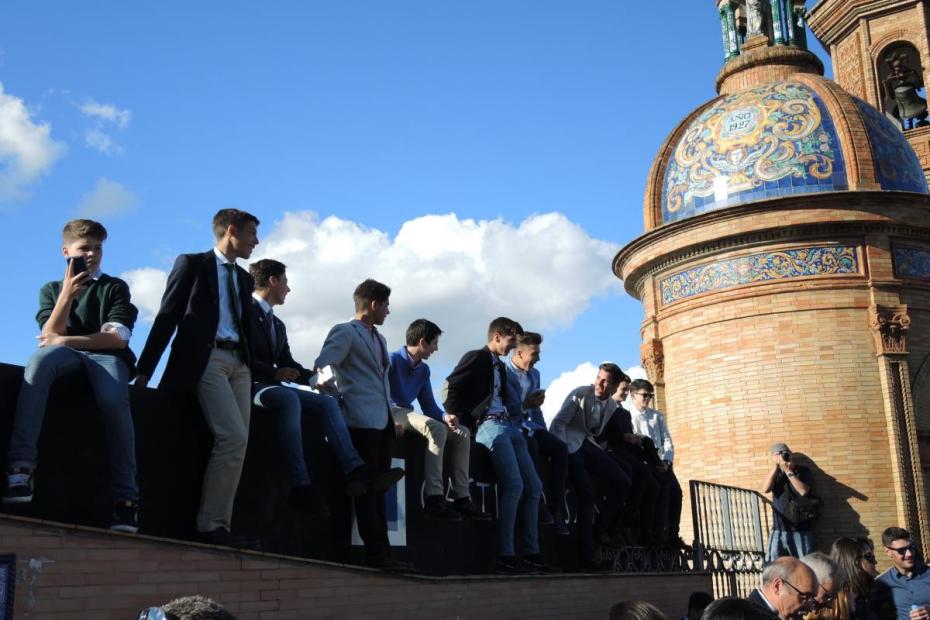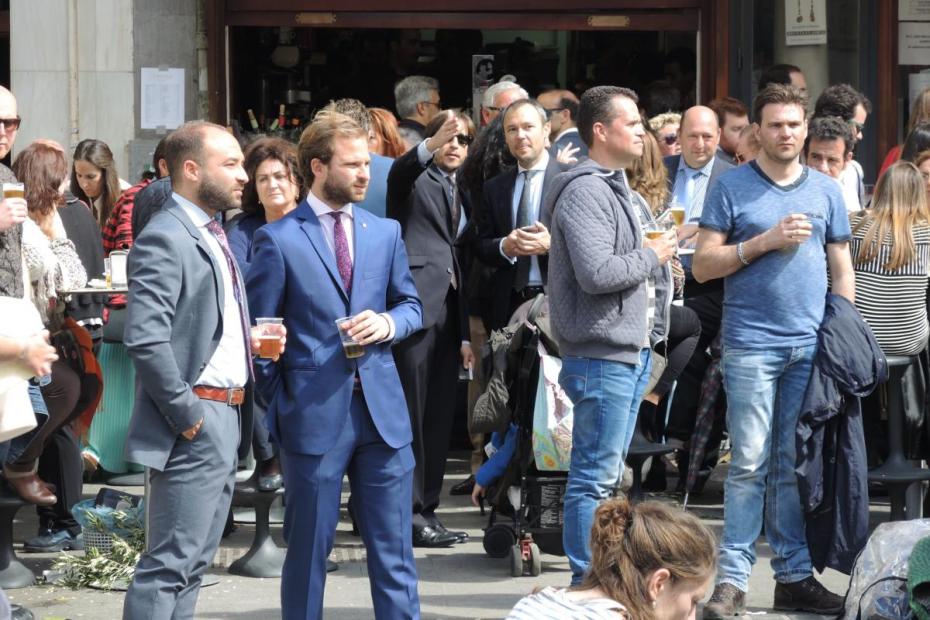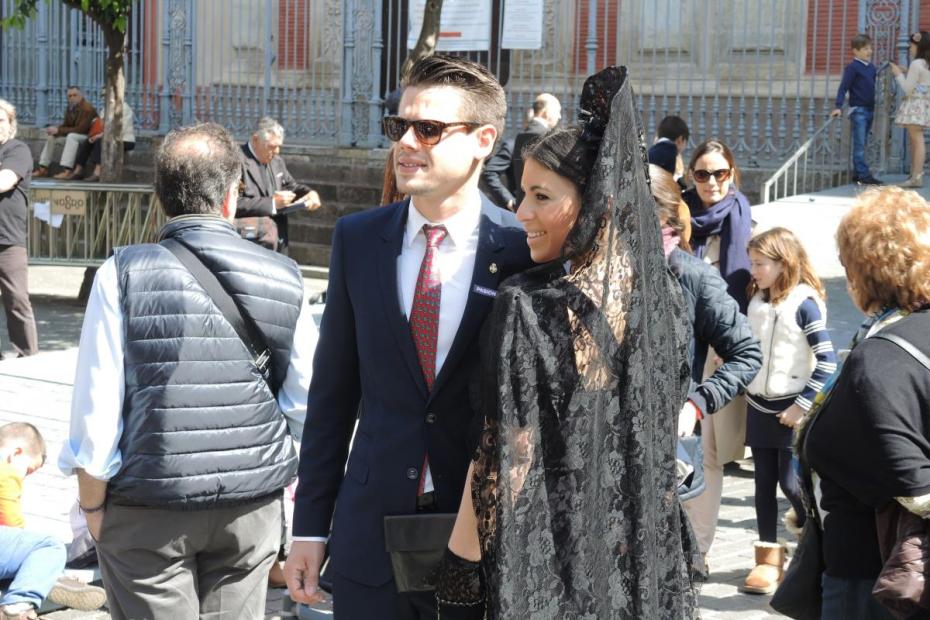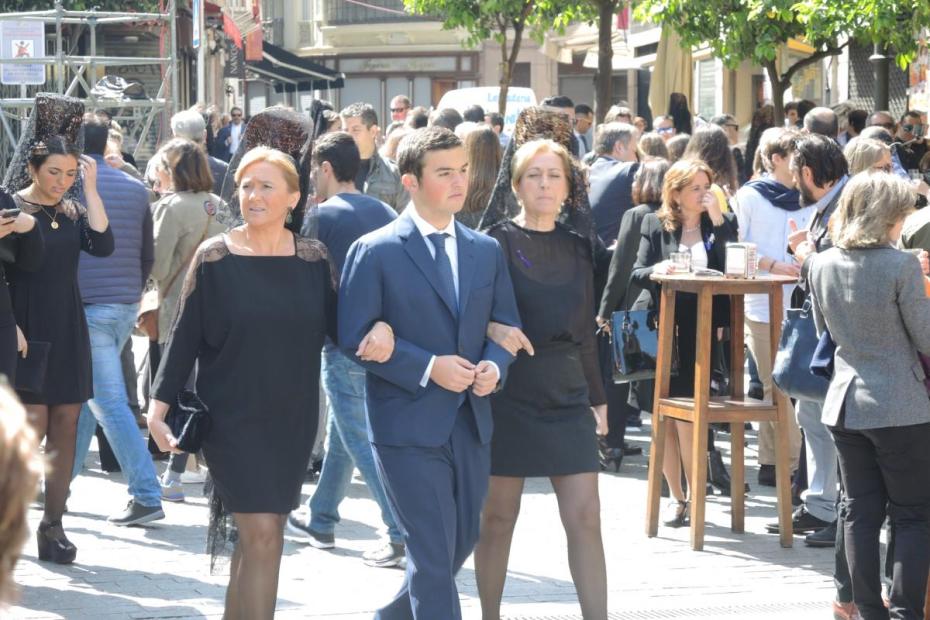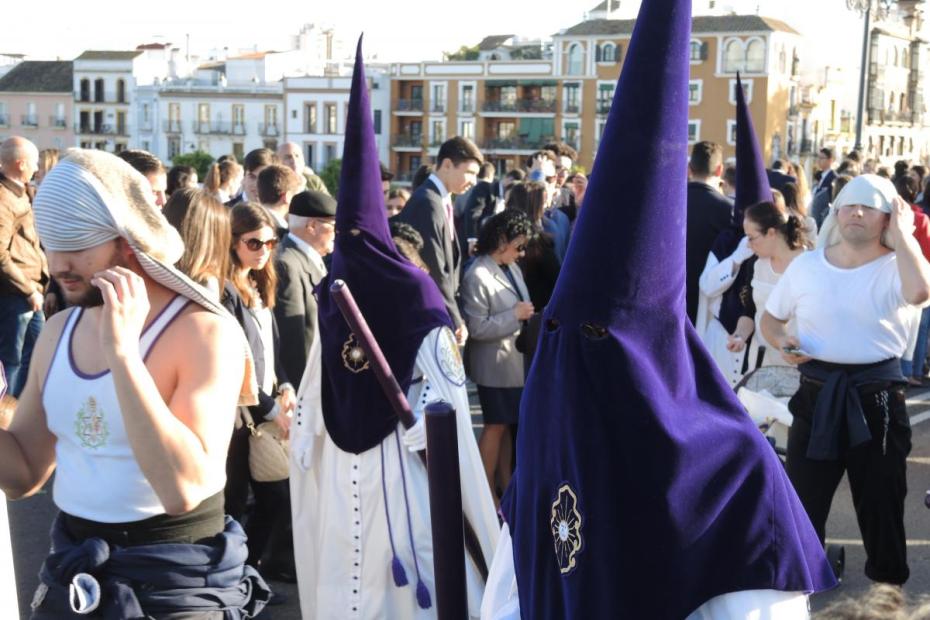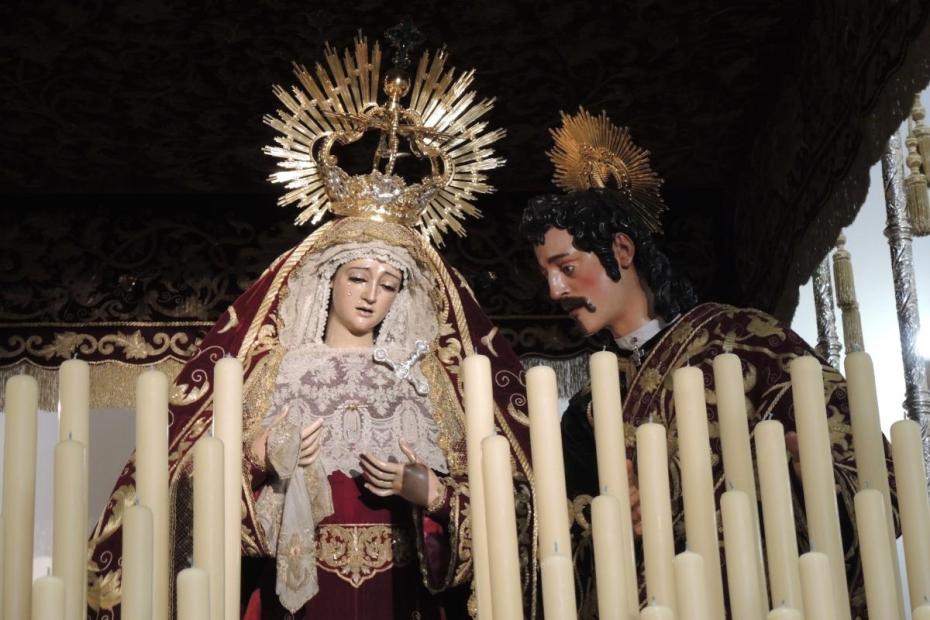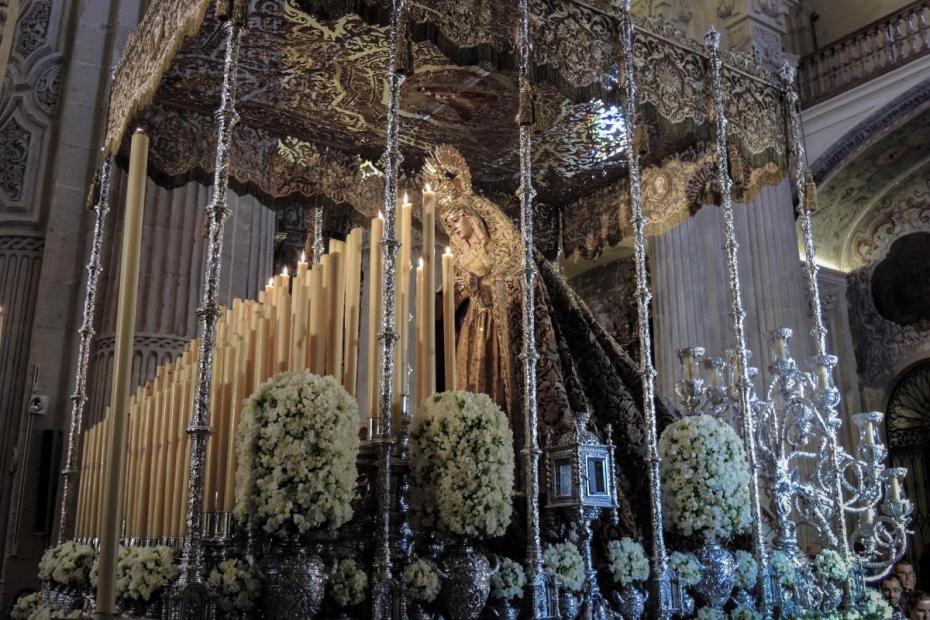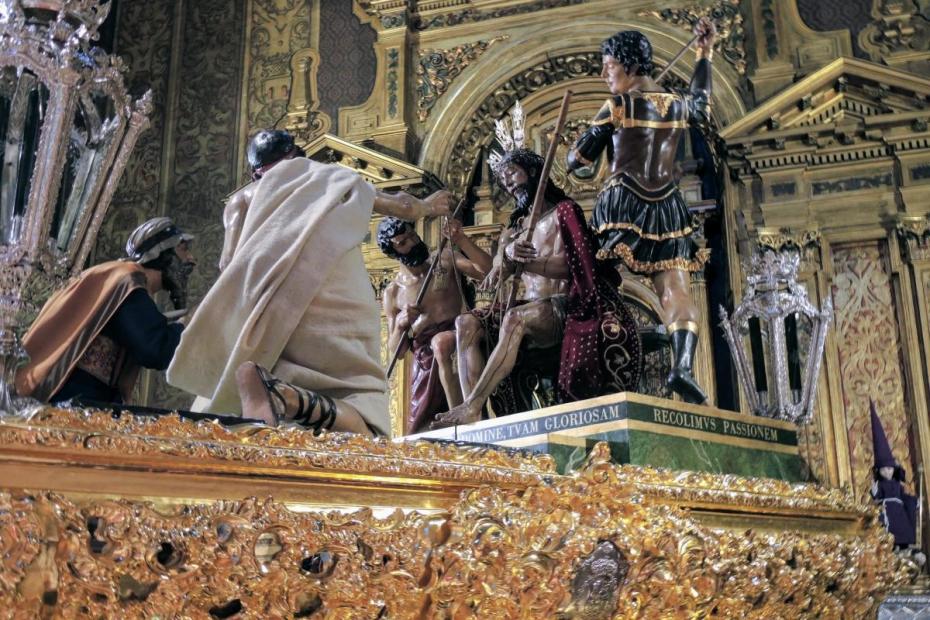Holy Week processions in Seville show a quite explicitly gendered form of religiosity, one that repeatedly allows for displays of masculinity even in a society that has become much more egalitarian, and in confraternities that today are open to men and women. This gendered form differs significantly from Catholic instances where men are up front in leadership and women are preponderant among participants.
As is fitting for the Passion story, Jesus is often displayed stripped down, with his body quite visible, whereas Mary is always displayed covered in large, embroidered gowns that allow only her face and hands to be visible.
The costaleros, the men who carry the pasos, the “floats” that bear the images of Jesus and Mary, are often invisible underneath, but never fully invisible to the crowd. The crowd often cheers when they lift the pasos, which can weigh several tons, and during breaks the barrel-chested costaleros step out in the crowd in their t-shirts and mill among the processants.
One of the most notable elements of the festivities is how heavily attended they are by men, including large numbers of young men who attend in groups without girlfriends or wives. These men are not simply disconnected observers out for a stroll to be seen at the peripheries. They can generally be counted on for information about a procession, or the best location to see the next one.
On Palm Sunday, the norm is for young men to wear new suits. One sees groups of young men, in their teens and early twenties, out in force in the streets. Some are with girlfriends, but though the dressing links to the religious occasion, many are seemingly dressing up for each other, at least as much as for any young women. They are respectful and attentive. In the evening too, except in the reserved seating areas, men significantly outnumber women, though the streets are quite safe.
On Holy Thursday, interestingly, it has become something of a fashion for women to dress up in mantillas, the traditional black lace veils of the region. The number of women doing so is small, and they are always quite elegantly dressed — positioned, like the men they were with, always as stylish observers in the plaza, not as participants in the processions. It is a surprising gesture in a feminist era, but is one way to stand out.
Two women interviewees, both of whom loved the tradition and had been integrally involved in confraternities for decades, smiled when asked about the ways that men and masculinity seemed on display. In so many ways, one claimed, “it’s a ritualized competition among men. It’s very subtle, but it’s part of it.”
“It's showing off,” one said.
“Yeah,” her friend responded, “it’s showing off, like peacocks.”
That night would be the first time in years that one of them would not be able to walk in procession with the confraternity, for health reasons, but they had coveted tickets to be inside the cathedral itself when the processions came through at night, and were thrilled for the opportunity.
